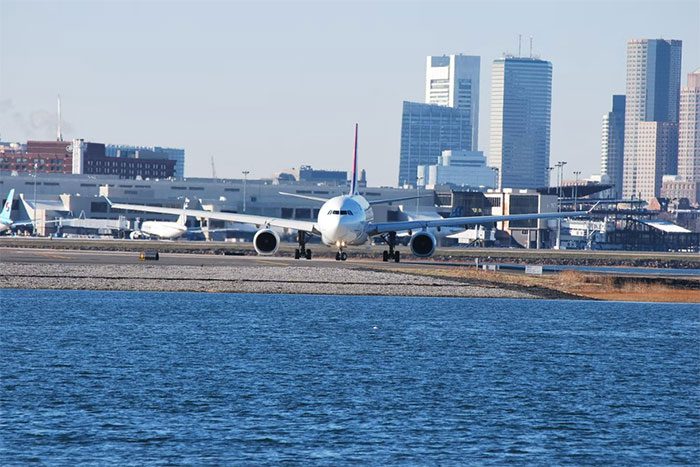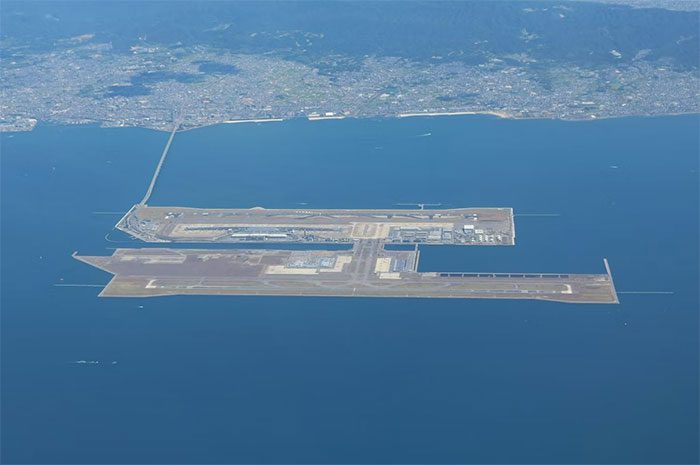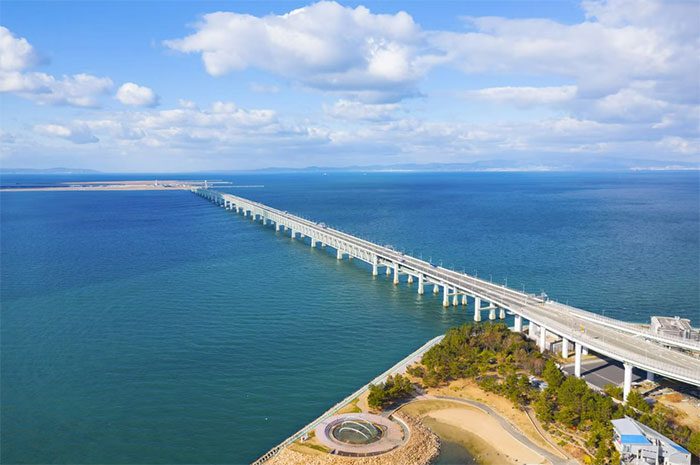With an investment of up to $20 billion, Kansai International Airport is located in the middle of Osaka Bay off the coast of Honshu, Japan, which surprises many travelers.
Kansai International Airport serves both domestic and international flights. In addition to a wide range of luxury brand stores – such as Chanel, Hermes, and Cartier – and major restaurants, the airport’s unique exterior shape has left social media users “breathless” due to its distinctiveness.

Kansai International Airport serves both domestic and international flights. (Illustrative photo).
Issues with the Airport in Osaka
Back in the late 1960s, the Kansai region of Japan realized that it was losing commercial, developmental, and business advantages to the Tokyo area. To make Osaka and Kobe more attractive, local authorities proposed the construction of a new international airport to compete with the second airport being developed in Tokyo – this facility later became Narita International Airport (NRT).
Osaka’s original Itami Airport was also facing congestion as commercial air travel became more popular. With the development of larger aircraft such as the Boeing 747 and the emergence of short-haul Boeing 737s increasing flight frequency, the city needed to consider expanding Itami Airport. If this could not be achieved, a new airport might be the only solution to meet the growing capacity.
The first drawback of the initial idea was that Itami Airport was located in the densely populated areas of Itami and Toyonaka. This meant that the airport was surrounded by buildings and thus could not be expanded. Therefore, planners needed a new facility located elsewhere in the region.

While the city suffered significant damage, the airport remained unharmed. (Illustrative photo).
Planning the New Airport
Initially, developers and government officials wanted to build a new airport near Kobe, which could easily serve both cities since Kobe did not have its own airport. However, the city of Kobe rejected these plans, and instead, airport planners turned their attention to the bay located south of Osaka Prefecture. The advantage of this plan was that the airport would be situated far from all suburban residential areas and land, thus allowing it to operate 24 hours a day. The airport also avoided the risk of opposition from residents (a problem that had occurred in Tokyo).
With this option, experts planned to construct a 4-kilometer long and 2.5-kilometer wide artificial island for the new airport. This required complex engineering to ensure a solid foundation for the runway and buildings, as well as to withstand risks from natural phenomena such as typhoons, tsunamis, and earthquakes.
These special design features proved effective during a major earthquake years later. While the city suffered significant damage, the airport remained unharmed (although the facility did experience flooding from a storm).
Construction of the Airport
The infrastructure was finally groundbreaking in 1987, 20 years after the project began. It took more than three years to construct the island. To connect the island to the mainland, the team built a 3-kilometer bridge.

The island is divided into two areas for each terminal – Terminal 1 and Terminal 2. (Illustrative photo).
Terminal 1 – designed by Renzo Piano – accommodates both international and domestic flights to and from major airlines, stretching an impressive 1.7 kilometers, making it the longest airport terminal in the world today.
Terminal 2 caters to more local flights. During its peak operating period in 2019, the airport recorded 29.4 million passengers, becoming the third busiest airport in Japan. It has also become an international hub for All Nippon Airways (ANA) and Japan Airlines, facilitating the transport of one million tons of cargo.
The Institution of Civil Engineers (ICE) stated: “The airport initially cost $14 billion to build. By 2008, the costs had risen to $20 billion. These amounts included land reclamation, two runways – with the second runway, measuring 4,000 meters, added in 2007 – and the terminals.”
However, by 2018, since its inauguration in 1994, the airport has been sinking at a concerning rate. An additional $150 million has been invested in raising the seawalls to protect the terminals; however, the island is projected to sink an additional 4 meters by 2056. This will pose a significant challenge for engineers and experts to keep the island and airport operational.


















































